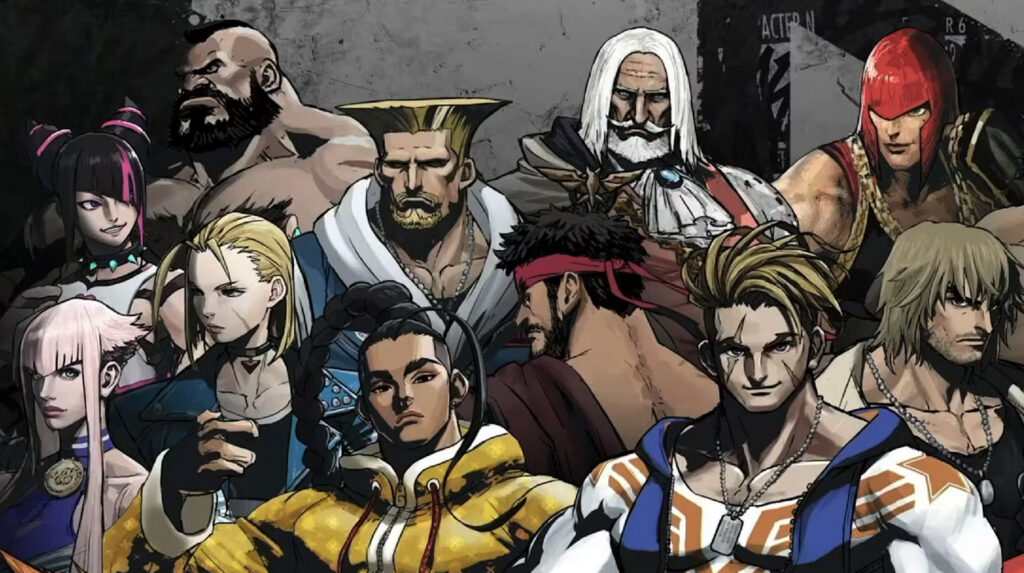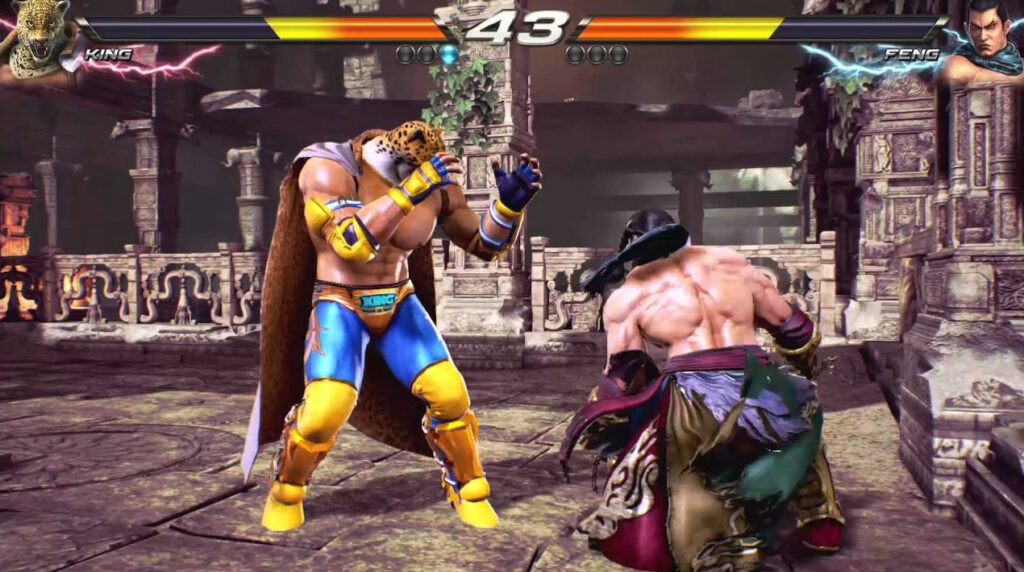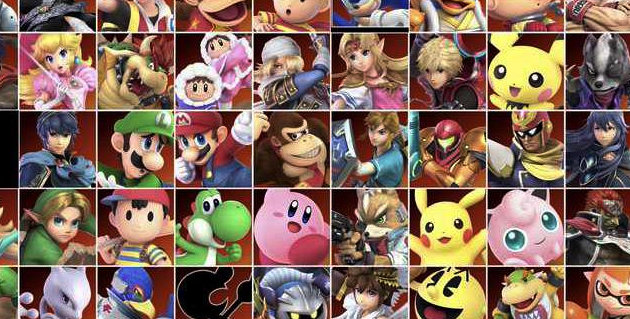Introduction to Street Fighter
Street Fighter, originally released in 1987 by Capcom, marked a significant milestone in the world of video games, particularly within the fighting genre. The game introduced players to a captivating environment of one-on-one combat, wherein individuals could select from a variety of diverse characters, each possessing unique fighting styles, moves, and special abilities. This approach to gameplay not only appealed to competitive players but also laid the groundwork for numerous sequels and spin-offs that would follow in the years to come.
The initial concept of Street Fighter was innovative for its time, allowing players to engage in battles against human opponents, as well as computer-controlled fighters. Each character, from the iconic Ryu to the formidable Chun-Li, brought distinct personalities and techniques that would become synonymous with the series. Players soon became immersed in the game’s vibrant aesthetics, colorful character designs, and distinct settings that represented various global locations, enhancing the overall experience of battling in unique arenas.
The game’s mechanics were pioneering, featuring a control scheme that utilized buttons for punches and kicks, alongside the introduction of special moves executed through specific combinations. Such a system encouraged strategic play and skill development, which became critical elements in the console and arcade fighting scenes. Moreover, Street Fighter’s presence in arcades contributed to its popularity, as players gathered to challenge one another, forging a sense of community and camaraderie among enthusiasts of the genre.
In essence, Street Fighter not only revolutionized the gaming landscape at its inception but also set the stage for an entire genre, inspiring numerous titles and spurring on an enduring legacy. Its impactful debut undoubtedly secured a prominent position in the annals of video game history, as it continued to influence both the fighting game community and game developers worldwide.
The Evolution of Fighting Games
Before the advent of Street Fighter in 1987, the fighting game genre was relatively nascent, characterized by rudimentary mechanics and limited player interaction. The early days of fighting games can be traced back to the 1970s and early 1980s, with titles such as “Pong” and “Blockade,” which, while not traditional fighters, introduced the concept of player versus player competition. As technology advanced, so did the genre. Games like “Karate Champ” (1984) and “Heavyweight Champ” (1976) emerged, introducing basic fighting mechanics and the use of unique character moves, thereby laying the foundation for more intricate gameplay.
The significance of these early titles cannot be overstated; they established fundamental mechanics such as character selection and one-on-one combat scenarios that would become staples in future fighting games. However, it wasn’t until the release of “Street Fighter” that the genre began to transform significantly. The iconic game introduced several innovations, including six-button controls, special moves, and the concept of combos, where players could link multiple attacks together for greater damage. These features not only enriched the gameplay experience but also encouraged deeper strategy and skill development among players.
Street Fighter’s success paved the way for a multitude of sequels and inspired countless other fighting games. Titles such as “Mortal Kombat” and “Tekken” drew heavily from the innovations introduced by Street Fighter, further evolving the genre. Enhanced graphics, more intricate character backstories, and complex mechanics became standard with each successive release. The impact of Street Fighter on the fighting game genre is profound; it revitalized interest and gave rise to a community that thrives on competition and skill, thus changing the landscape of gaming forever. This evolution set the stage for future developments, enabling fighting games to flourish as a beloved genre in the gaming industry.
Innovative Gameplay Mechanics
When Street Fighter was first introduced by Capcom in 1987, it revolutionized the fighting game genre with its innovative gameplay mechanics. The introduction of special moves, unique character abilities, and an intricate input system distinguished it from its predecessors. This revolutionary approach laid the groundwork for future fighting games and fostered a competitive spirit among players.
Special moves, often requiring specific combinations of directional inputs and buttons, introduced an exciting layer of depth that encouraged players to master their characters. These moves not only showcased the unique fighting styles of each character but also rewarded skillful execution. Players began to develop strategies around timing, distance, and positioning, significantly deepening the tactical engagement of matches. As gamers experimented with different combinations, the concept of “combos” emerged, allowing for devastating sequences of attacks that could turn the tide of a fight.
The input system played a critical role in the game’s mechanics. The use of joystick controls and button configurations enabled precise movements and reactions during combat. This setup shifted the focus from mere button-mashing to a more strategic style of play, where players needed to anticipate their opponents’ actions and respond accordingly. Such mechanics paved the way for intricate strategies involving mix-ups, counters, and various forms of aggression, fundamentally changing how fighting games were perceived and played.
By introducing these groundbreaking concepts, Street Fighter not only elevated the complexity of gameplay but also created a platform for community engagement and competitive play. Other games within the genre soon sought to emulate these mechanics, understanding that the depth of strategy and skill introduced by Street Fighter was essential for a successful fighting game. This shift set a new benchmark, impacting game development and player expectations for decades to come.
Iconic Characters and their Legacy
The Street Fighter franchise is often celebrated for its diverse and memorable cast of characters, each contributing uniquely to the series’ enduring success. From the very first installment, characters like Ryu and Ken established themselves as iconic figures in gaming history. Ryu, known for his disciplined fighting style and the powerful Hadouken, represents the archetype of the wandering martial artist, while Ken, with his flashy moves and connections to American culture, offers an engaging contrast. Their dynamic rivalry has not only captivated players but has also become a template for character development in subsequent fighting games.
Beyond Ryu and Ken, Chun-Li has notably broken ground as one of the first female fighters in video gaming, further elevating the franchise’s appeal. Her fighting prowess, alongside her role as an Interpol officer seeking justice for her father’s death, brings depth to her character, thus inspiring future game designers to create well-rounded female characters in fighting games. The blend of personal backstory and unique abilities in characters like Chun-Li has set a standard that many later games have aspired to emulate.
Additionally, the introduction of characters from various cultural backgrounds, such as Blanka, Dhalsim, and Guile, demonstrated a commitment to inclusivity and representation, which continues to influence character design in modern gaming. The legacy of these characters is evident in the numerous fighting games that followed, where developers increasingly strive to create diverse rosters that reflect a global audience. The iconic status of Street Fighter’s characters is not merely a product of nostalgia but rather a testament to their role in shaping gaming culture, inspiring a generation of players and developers alike.
The Competitive Scene and Tournaments
The rise of competitive play in the Street Fighter franchise marked a significant turning point in the gaming landscape, especially within the fighting genre. With the release of Street Fighter II in 1991, players quickly began organizing informal tournaments in arcades, fostering a sense of community and competition that had not been seen before. These early gatherings laid the groundwork for what would become a robust tournament scene, dedicated to not only honing skill but also celebrating the game itself.
The establishment of tournaments, such as the first official Street Fighter II tournament in 1996, played a pivotal role in galvanizing the community. This event showcased the talents of skilled players and provided a platform for them to gain recognition. As word spread, festivals and competitions became commonplace, drawing in crowds willing to witness the intensity of high-level play. The evolution of these events was significant; they transformed from small-local contests into massive gatherings, culminating in events such as the Evolution Championship Series (EVO), which has become synonymous with competitive fighting games.
Community involvement has been one of the cornerstones of the Street Fighter competitive scene. Online forums, social media platforms, and streaming services allowed players to connect, share strategies, and improve their gameplay. As the community grew, so did the expectations for player skill and commitment. Many players now dedicate hours a day to practicing techniques, dissecting match footage, and refining their knowledge of character matchups.
Moreover, the influence of Street Fighter has extended beyond the community, paving the way for eSports. The fighting game community (FGC) became a model for organizing competitive gaming, inspiring countless other games to adopt similar tournament formats. Today, Street Fighter serves as a critical reference point in discussions about competitive gaming culture and eSports, proving that it has made a lasting impact on the evolution of the genre. This flourishing competitive scene continues to captivate audiences, ensuring that Street Fighter remains integral to the world of gaming.
The Franchise’s Expansions and Sequels
The Street Fighter franchise has witnessed a remarkable evolution since its inception in the late 1980s. Initially introduced in 1987, the original Street Fighter set the stage for what would become a groundbreaking series in the fighting game genre. However, it was the release of Street Fighter II in 1991 that truly revolutionized the landscape, offering more characters, distinct moves, and enhanced gameplay mechanics. This sequel not only solidified the franchise’s status but also established many conventions that are now staples in fighting games.
As the years progressed, the popularity of Street Fighter II led to a range of iterations and expansions, including Super Street Fighter II and Street Fighter II Turbo. Each installment brought new gameplay mechanics and character balance adjustments, contributing to a more refined and competitive environment. This focus on character diversity and strategic depth garnered a loyal player base, propelling competitive gaming into a mainstream phenomenon.
The franchise continued to grow with the arrival of Street Fighter III in 1997, which introduced a new art style and mechanics, including the parry system. While it initially received mixed reviews in comparison to its predecessor, it eventually garnered critical acclaim and influenced future fighting games. The next major release, Street Fighter IV in 2009, revived interest in the series with updated graphics and a return to classic gameplay elements, appealing to both veterans and newcomers alike.
Over the years, Street Fighter has expanded beyond traditional sequels, with various spin-offs such as the popular Street Fighter Alpha series and crossover titles, including the Marvel vs. Capcom series. Each of these expansions has not only contributed unique gameplay experiences but also expanded the franchise’s influence and presence in both competitive and casual gaming spheres.
The Influence on Other Media
Street Fighter, a cornerstone of the fighting game genre, has remarkably transcended its gaming origins, resulting in a significant influence on various forms of media. The franchise’s widespread appeal has sparked a series of animated television shows and films, each attempting to capture the essence of the beloved characters and thrilling gameplay that fans adore. The iconic characters, such as Ryu, Chun-Li, and Ken, have become cultural icons, regularly appearing in adaptations that extend the reach of the franchise beyond the consoles.
The animated series, which first debuted in the 1990s, took the core elements of the video game and enriched them with backstories, expanded character arcs, and engaging narratives. The series successfully introduced Street Fighter to a broader audience, compelling fans of different media to explore the video game itself. Additionally, films such as the live-action adaptations, albeit with mixed critical reception, have furthered discussions surrounding the franchise’s impact on film culture. These cinematic efforts reveal the ambition of Street Fighter to narrate its rich universe beyond the realm of gaming.
Moreover, the merchandise spawned by the franchise has significantly contributed to its lasting presence in popular culture. Action figures, clothing lines, and collectibles have solidified the game’s legacy, proving its ability to resonate with fans across multiple demographics. The vast array of Street Fighter merchandise showcases the franchise’s cultural significance, enabling fans to connect with the characters in a more personal and tangible way.
Ultimately, Street Fighter has not only shaped the landscape of video gaming but has also carved a niche in other media forms. Its legacy exemplifies how video games can influence films and television, and how characters can evolve into cultural symbols that encourage cross-media interactions, paving the way for future fighting games and adaptations.
The Community and Fandom
The Street Fighter franchise has fostered a vibrant and passionate community since its inception, creating a unique culture that transcends gaming itself. Central to this community is fan art, where artists worldwide channel their creativity by reinterpreting beloved characters and iconic moments from the series. These artworks range from digital illustrations to traditional paintings and showcase the skills and interpretations of dedicated fans. Online platforms, notably social media sites and art-sharing communities, have allowed artists to connect, share, and receive recognition for their work, thereby strengthening community ties.
Cosplay is another avenue through which fans express their love for Street Fighter. Enthusiasts meticulously craft costumes that replicate the distinct outfits of characters like Ryu, Chun-Li, and M. Bison. These cosplays are often displayed at conventions, where fans come together to celebrate their shared interest. Events such as Comic-Con and Evo are popular hubs for cosplayers, providing a platform for showcasing elaborate designs and participating in competitions. The dedication displayed in these costumes not only highlights the skills within the community but also fosters camaraderie among participants, united by their shared admiration for the game.
Online forums and communities have served as essential gathering places for fans, facilitating discussions on strategies, character analysis, and game mechanics. Websites like Reddit and dedicated Street Fighter forums allow for vibrant discourse, where players can seek advice, share experiences, and celebrate achievements. Furthermore, these platforms have been crucial for organizing online tournaments, which have become a significant aspect of the competitive scene. The unity seen within this community underscores the powerful influence that fan engagement holds in maintaining the game’s relevance across generations.
Conclusion: The Lasting Legacy of Street Fighter
The impact of Street Fighter on the gaming industry and the fighting game genre is nothing short of revolutionary. Since its debut in 1987, Street Fighter has consistently pushed boundaries, defining the standards for gameplay mechanics, character development, and competitive play. The introduction of unique characters with individual fighting styles made it a cornerstone in the evolution of fighting games. Players began to see not just a game, but a diverse world filled with rich backstories and signature moves, establishing a sense of connection that many franchises strive to replicate today.
Moreover, Street Fighter spawned a competitive gaming culture, paving the way for tournaments that turned casual gaming into professional eSports. The series has inspired countless players and aspiring developers, cementing its place as a cultural touchstone. Not only did it set the stage for future titles, but it also birthed various gameplay elements such as special moves and combos, which have become staples in the genre. This influence extends far beyond its own realm, permeating various genres and shaping gaming as a whole.
As the gaming landscape continues to evolve with advances in technology and shifts in player expectations, the future of the Street Fighter franchise appears promising. Upcoming titles are anticipated to blend nostalgia with innovative gameplay features that utilize modern mechanics and enhanced graphics, ensuring the series remains relevant. Additionally, the rise of online multiplayer modes presents new opportunities for community engagement and competition, further solidifying Street Fighter’s status as a leading force in fighting games. While challenges such as maintaining a balanced roster and evolving narratives will persist, the legacy of Street Fighter serves as a testament to its enduring appeal and influence, marking it as an iconic powerhouse in the history of video games.


